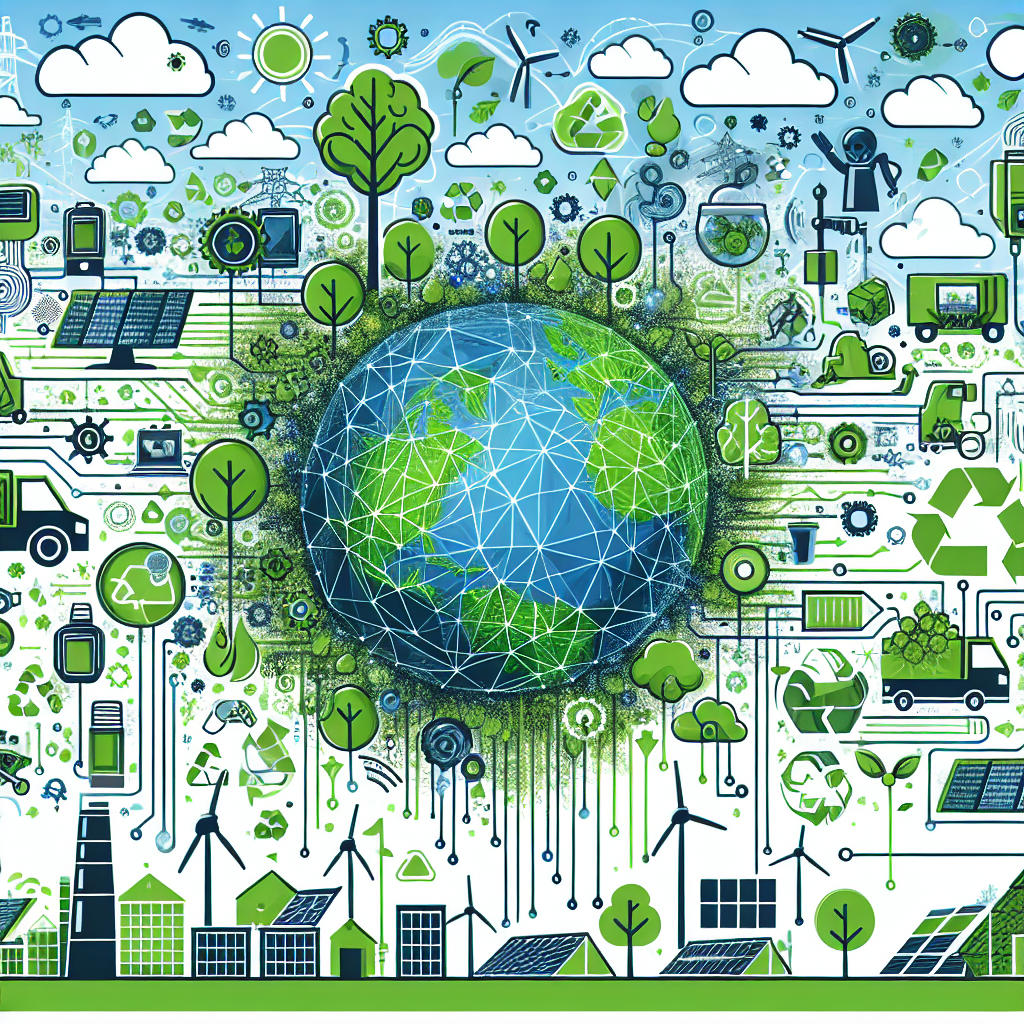The Circular Economy 3.0: AI-enabled Solutions for a Greener Tomorrow
In recent years, the concept of the circular economy has gained significant traction as a sustainable alternative to the traditional linear economy. The circular economy is based on the principles of designing out waste and pollution, keeping products and materials in use, and regenerating natural systems. By shifting from a “take-make-dispose” model to a circular model, we can reduce our environmental impact, conserve resources, and create a more resilient and sustainable economy.
The circular economy can be broken down into three distinct phases, with the third phase, known as Circular Economy 3.0, focusing on the integration of artificial intelligence (AI) technologies to optimize resource use, increase efficiency, and drive innovation. AI-enabled solutions are playing a crucial role in unlocking the full potential of the circular economy and accelerating the transition towards a greener future.
AI technologies, such as machine learning, data analytics, and predictive modeling, can help businesses and organizations optimize their operations, improve resource efficiency, and reduce waste. By analyzing large datasets and identifying patterns and trends, AI can help identify opportunities for resource recovery, recycling, and reuse. AI can also help optimize supply chains, improve product design, and enhance decision-making processes, leading to more sustainable and efficient practices.
One example of AI-enabled solutions in the circular economy is the use of predictive analytics to optimize waste management processes. By analyzing data on waste generation, collection, and disposal, AI can help municipalities and businesses identify opportunities to reduce waste, increase recycling rates, and improve overall waste management efficiency. This can lead to cost savings, reduced environmental impact, and a more sustainable waste management system.
Another example of AI-enabled solutions in the circular economy is the use of blockchain technology to track and trace materials and products throughout their lifecycle. By using blockchain to create a transparent and secure record of transactions, businesses can ensure the authenticity and provenance of materials, promote ethical sourcing practices, and enable more efficient recycling and reuse processes. This can help build trust among consumers, reduce the risk of fraud and counterfeiting, and create a more sustainable and circular supply chain.
AI-enabled solutions are also being used to optimize resource recovery and recycling processes. By using AI to analyze data on material composition, sorting technologies, and recycling rates, businesses and organizations can identify opportunities to improve recycling efficiency, reduce contamination, and increase the recovery of valuable materials. This can help reduce the reliance on virgin resources, minimize waste, and create a more circular and sustainable economy.
In addition to optimizing resource use and waste management, AI-enabled solutions can also drive innovation and creativity in product design and manufacturing. By using AI to analyze consumer preferences, market trends, and design principles, businesses can develop products that are more durable, repairable, and recyclable. This can help extend the lifespan of products, reduce the environmental impact of manufacturing, and create a more sustainable and circular product lifecycle.
Overall, AI-enabled solutions are playing a critical role in advancing the circular economy and accelerating the transition towards a greener and more sustainable future. By harnessing the power of AI technologies, businesses and organizations can optimize their operations, improve resource efficiency, and drive innovation, leading to a more circular and resilient economy.
FAQs:
Q: What is the circular economy?
A: The circular economy is an economic model based on the principles of designing out waste and pollution, keeping products and materials in use, and regenerating natural systems. It aims to create a more sustainable and resilient economy by shifting from a linear “take-make-dispose” model to a circular model that promotes resource efficiency, waste reduction, and environmental conservation.
Q: What is Circular Economy 3.0?
A: Circular Economy 3.0 is the third phase of the circular economy, which focuses on the integration of AI technologies to optimize resource use, increase efficiency, and drive innovation. AI-enabled solutions are playing a crucial role in unlocking the full potential of the circular economy and accelerating the transition towards a greener future.
Q: How can AI-enabled solutions help advance the circular economy?
A: AI technologies, such as machine learning, data analytics, and predictive modeling, can help businesses and organizations optimize their operations, improve resource efficiency, and reduce waste. By analyzing large datasets and identifying patterns and trends, AI can help identify opportunities for resource recovery, recycling, and reuse, optimize supply chains, improve product design, and enhance decision-making processes, leading to more sustainable and efficient practices.
Q: What are some examples of AI-enabled solutions in the circular economy?
A: Some examples of AI-enabled solutions in the circular economy include the use of predictive analytics to optimize waste management processes, blockchain technology to track and trace materials and products throughout their lifecycle, and AI technologies to optimize resource recovery and recycling processes. AI can also drive innovation and creativity in product design and manufacturing by analyzing consumer preferences, market trends, and design principles.
Q: How can businesses and organizations benefit from adopting AI-enabled solutions in the circular economy?
A: By adopting AI-enabled solutions in the circular economy, businesses and organizations can optimize their operations, improve resource efficiency, reduce waste, drive innovation, and create a more sustainable and resilient economy. AI technologies can help businesses save costs, reduce environmental impact, build consumer trust, and create new business opportunities, leading to long-term sustainability and success.

